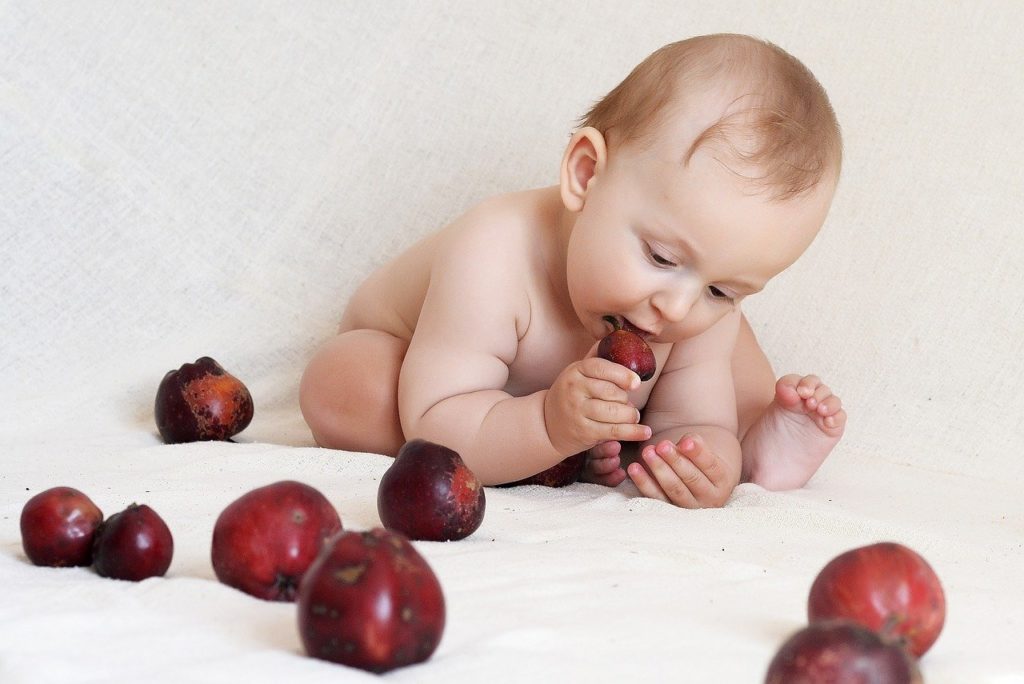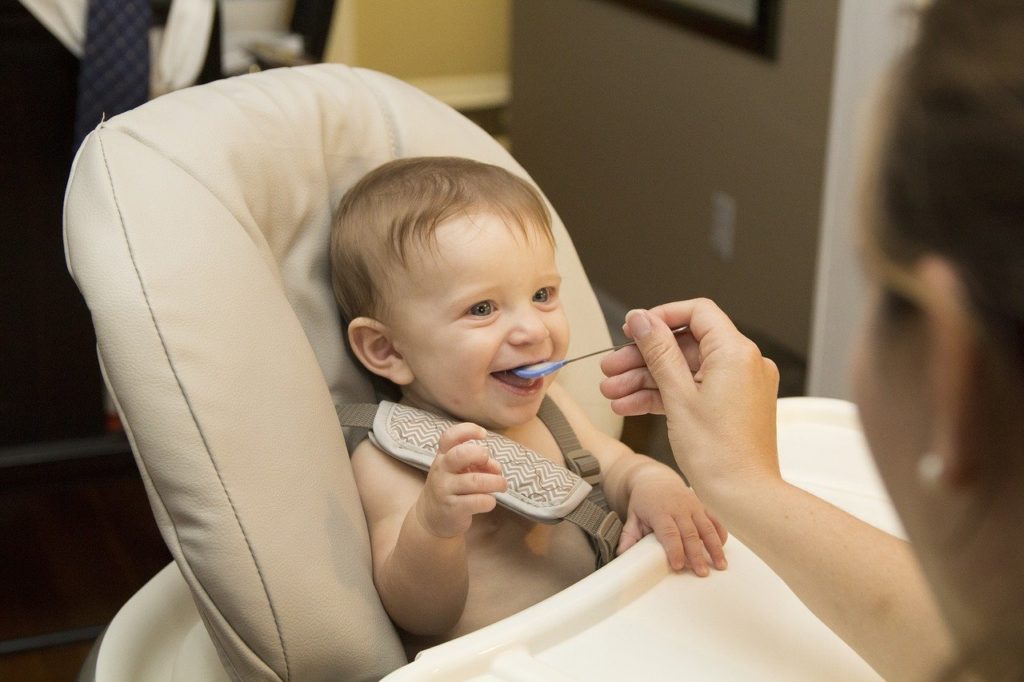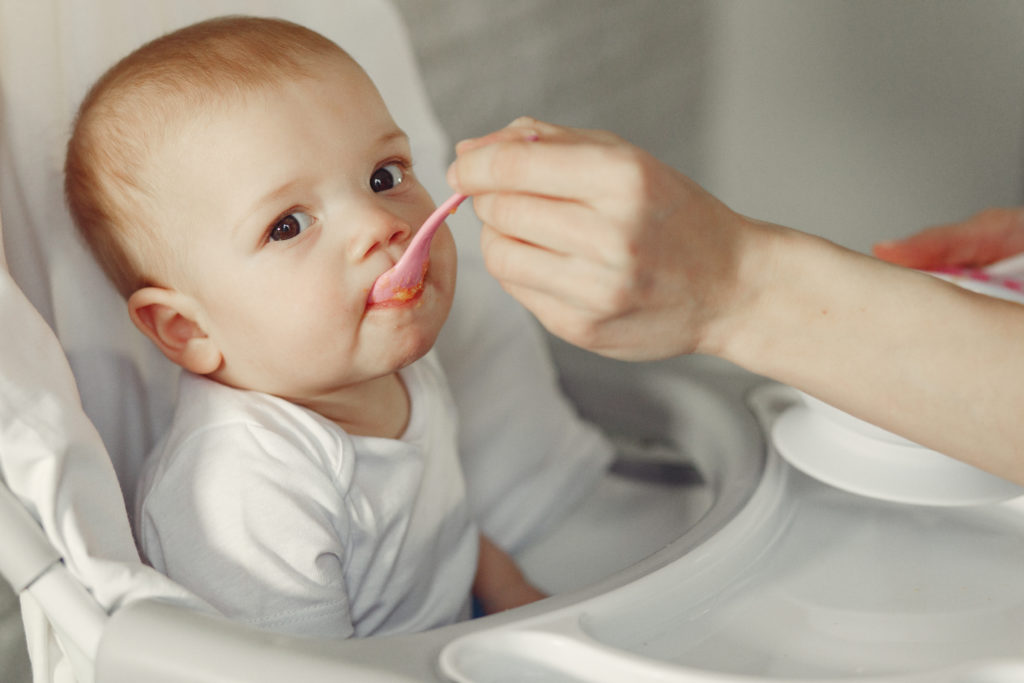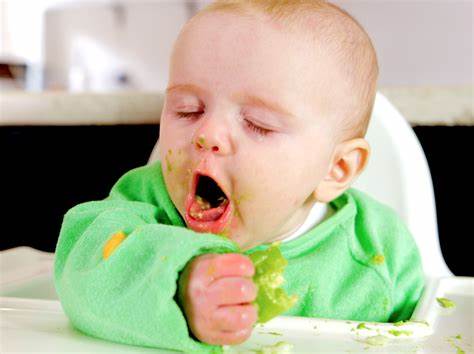Weaning is a significant stage in a child’s development process since it is the first step in bringing the baby into foods other than the milk of the mother. It is a slow process requiring great patience and comprehension. Read on to known about baby weaning and introduction to solid food to your baby.
What Does Weaning a Baby Mean?
Weaning is the process by which solid foods are introduced to children who were entirely dependent on milk.
It starts with the first mouthful of food and ends with breastmilk or formula milk.
When and how the introduction of solid foods is important for developing safe eating habits and reducing fussy feeding.
The weaning age for the infant is about six months. Until then, the baby receives all the nutrients and energy from breast milk from the mother, which protects the baby by improving its immune system and shielding it from disease and infection.
Weaning is a significant step in a child’s development and is a special moment in its growth. When you need to learn when to wean your infant, before encouraging them, it is best to let them take the lead in embracing solid or other liquid food.

When Are Babies Ready For The Introduction To Solid Foods?
Many health professionals suggest that babies get solid food at the age of around 6 months.
It’s also recommended that babies be six months old as they continue to require extra nutrients, including iron and zinc, not found in milk. These nutrients will supply small quantities of solid food.
Experts also recommend that you look for signs that a baby is ready for solids in development. These involve:
- Sitting up fine
- Good control of the head
- Will keep food in their mouths and are able to chew
- Can pick up and put food in their mouth
- Is curious and eager to get involved in the mealtimes
It is rare for babies to be prepared for solids before 6 months of age.
If you think your child is showing signs that they’re ready for solids and you can start introduction to solid food to kids but not yet 6 months old, talk to your pediatrician for suggestions.

Traditional Approach vs Baby-Led Approach
Usually weaning is split into two primary approaches: traditional and baby-led approaches.
There is no one way to get your baby started on solids. That said, you can decide best for your kid if you know the advantages and the disadvantages of every approach.
Both strategies can also be combined to see what is best.
Traditional Weaning
You feed your baby and slowly expose it to solid foods in this approach. You will start with smooth purees before switching to mashed food, then finger food, and finally to bites.
Pros
- How much the baby has eaten is easier to see.
- This is less messy.

Cons
- It can be time-consuming to make separate meals and feed your infant.
- There may be a greater chance of overfeeding as you might have problems reading the fullness of your infant.
- It may be challenging for children to switch them to other textures if they are too used to smooth purees.
Baby-Led Weaning
This approach allows babies to feed themselves from the very beginning. As finger foods, you can introduce solid foods and encourage your child to explore solids at their own pace.
Pros
- Soon, it encourages independent eating.
- Babies may have a better chance of determining when they are complete and less likely to be overweight in the long run.
- It eliminates the need for separate cooking because family meals are usually appropriate.
- Your entire family can have meals together.

Cons
- It raises concerns about gagging and choking. However, if appropriate foods are offered, your child’s risk of choking should not be higher than under the traditional approach.
- It’s hard to know how much food your baby has eaten.
- It could be messy.
- Food allergies may be more difficult to identify, as several foods are often introduced at once.
Foods to Avoid During Weaning
You must not feed your baby during the weaning phase with multiple foods. Here’s a list of foods to avoid.
- Salt: Kidneys of the baby can’t absorb the salt yet
- Honey: No honey until the baby is one since it can cause botulism in infants
- Sugar: Sweeten the food with the puree of mashed banana or stewed dried fruit. No artificial sweeteners so your child is expected to grow a sweet tooth.
- Whole Nuts: They’re a choky threat and hard to handle
- Some fish: to avoid the poisoning of mercury
- Tea/coffee: Do not tempt the kid even with the smallest drop of the beverages. Caffeine and tannin are unsuitable for babies and block essential nutrients from integrating with their body
- Low-fat foods: Any low-fat dairy or food products are unfit for the baby because calories are required.

Tips for Successful Weaning
Some methods can ease the process of weaning. Here are only a few suggestions:
- Babies of course enjoy sweeter tastes. Consider offering vegetables before fruit to reduce your baby’s risk of refusing vegetables.
- Offer several different varieties. Try not repeatedly to offer the same food. If your baby doesn’t like any foods, try combining the food with some healthy food before your baby gets comfortable.
- Do not push your child to eat more than it likes, because it normally stops when it has enough.
- Make your mealtime relaxed and let your child have a mess. It helps babies to try more food and to develop a healthy eating relationship.
- If you do not want to cook every day, prepare ahead by freezing loads of food in ice cube trays or small containers.
- Try to include your child in a family meal. Babies consume more when they see others eating around them
Many methods of weaning will help make your baby more effective, such as family dinners, savory food before sweet foods and let your baby make a mess.
Potential Dangers
Weaning can be enjoyable and attractive, but a range of risks needs to be understood.
1. Food Allergies
Although a diversified diet is vital, your baby is likely to be allergic to certain foods.
Whether a family history exists of food allergies or eczema is present for your child, the probability is even greater.
No evidence exists that postponing the introduction of such foods after the age of 6 months would prevent allergies.
In the meantime, it is evident to almost all foods between the ages of 4 and 6 months that the possibility of allergies and celiac disease disorders can be reduced.
Indeed, several observational studies have shown that introduction of a variety of foods before 6 months may prevent allergies to food — particularly in children at higher risk.
Please contact your pediatrician if you have any questions about food allergies.

2. Choking
When beginning a baby with solid food, Choking can be an important concern.
It is important to remember, however, that gagging is a completely natural part of feeding. This serves as a reflex of protection in order to prevent choking babies.
Signs of tackles include opening the mouth, splintering and/or spitting the tongue forward. Your kid can look red in the face.
If a child is gagging it, it is important to avoid panic or worry.
But choking is a lot more severe. It happens when food blocks the airways, and the baby doesn’t respire correctly. Signs include turning blue, silence, and noiselessness. The baby can also start to vomit, or losing consciousness in extreme cases.

Weaning is a serious issue of food allergies and choking. Nonetheless, certain activities – for example, the implementation of individual foods and the avoidance of such high-risk foods – will reduce the risk significantly.
Weaning is a vital step for your baby to switch from breastmilk or formula to food. If you prefer baby or traditional weaning, or a combination of the two, at around 6 months you can start to give your baby some soft fruits, veggies, and cereals. Then you can move on to other things. Keep in mind that some things should be avoided and you may want to keep an eye on allergies and choking. To boost the chances of good weaning, let your baby have dinner comfortable and enjoyable and involve them as much as possible in family meals.
Also Read: When Should You Introduce Solid Food to Your baby?













